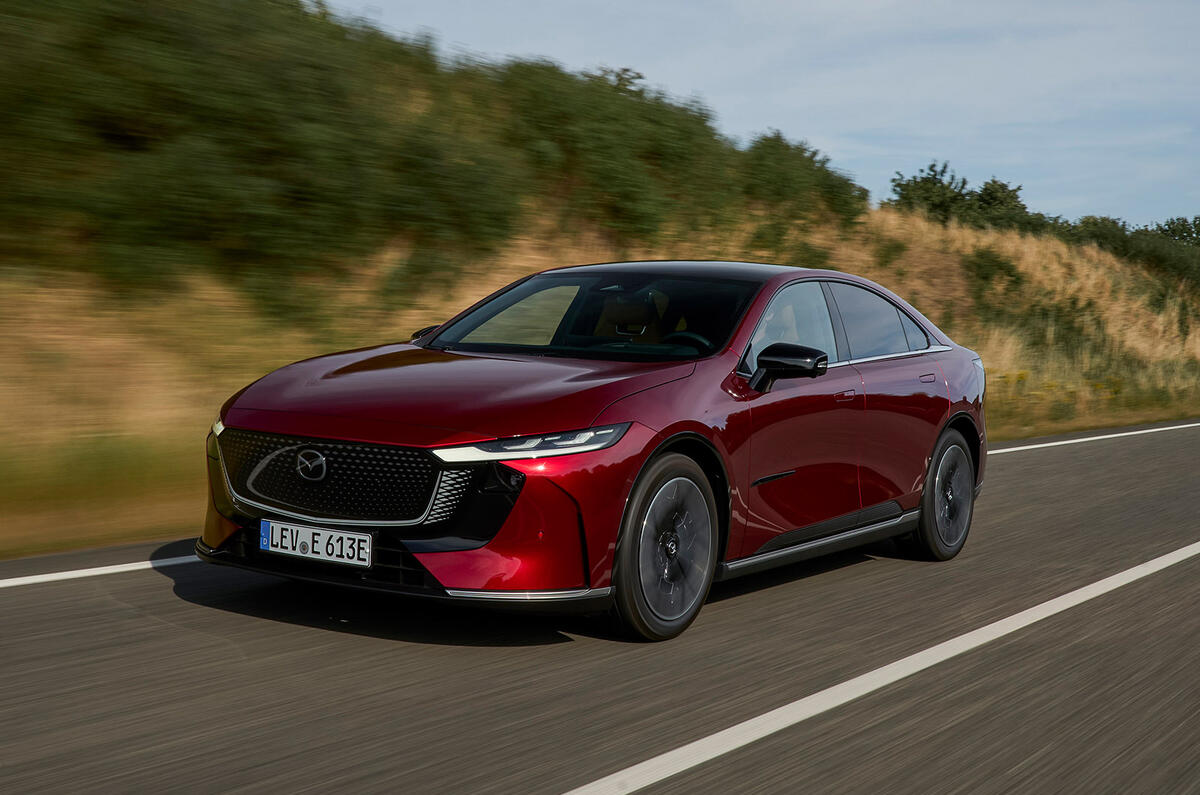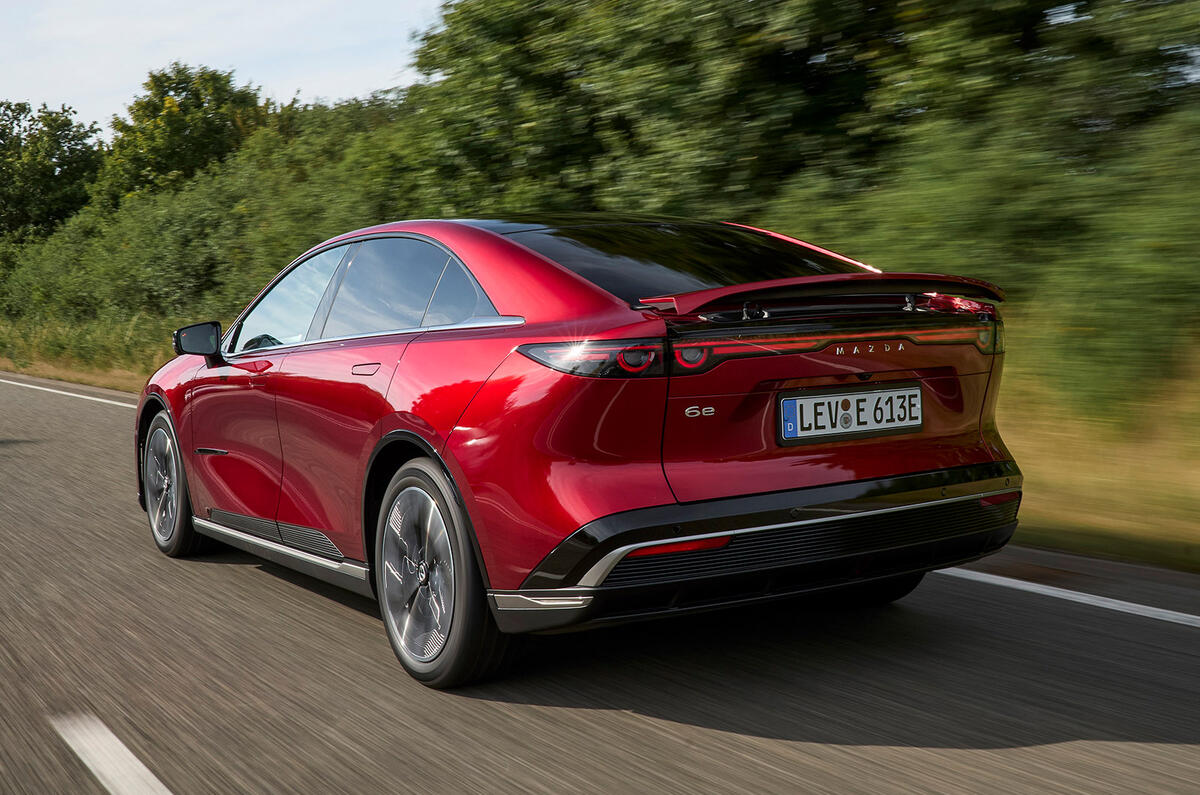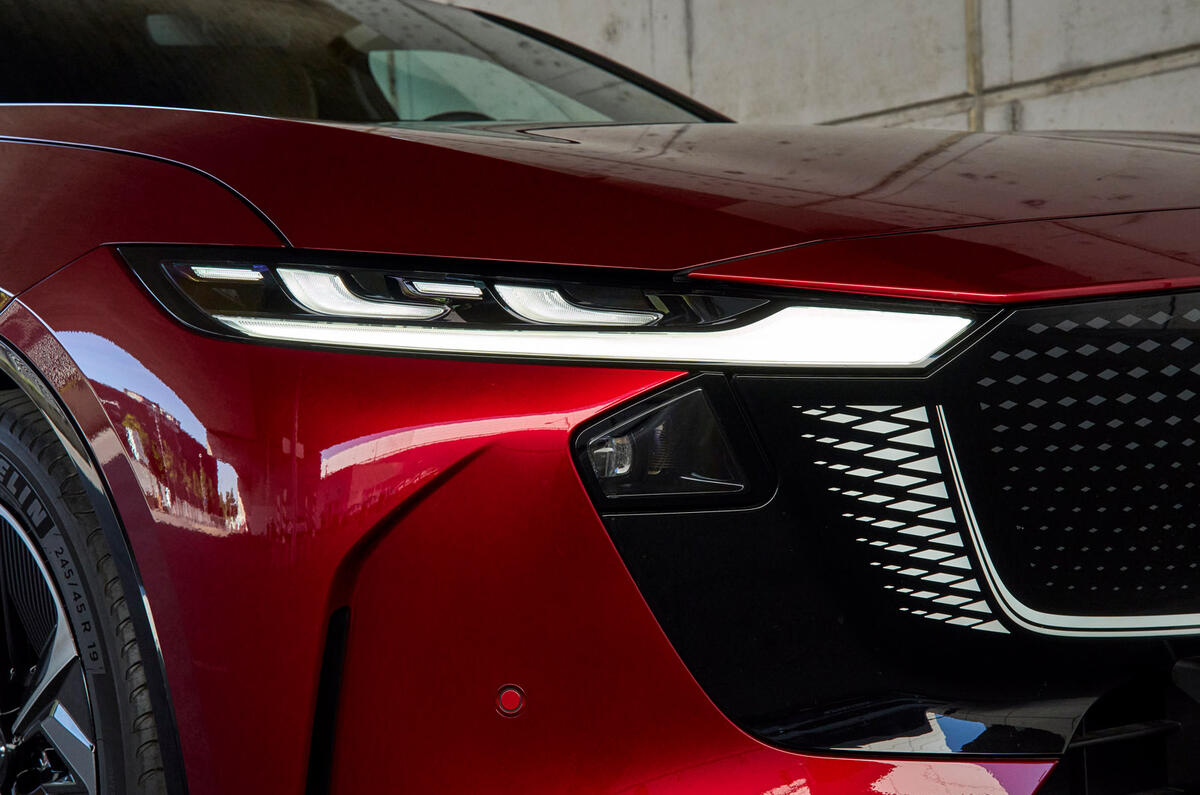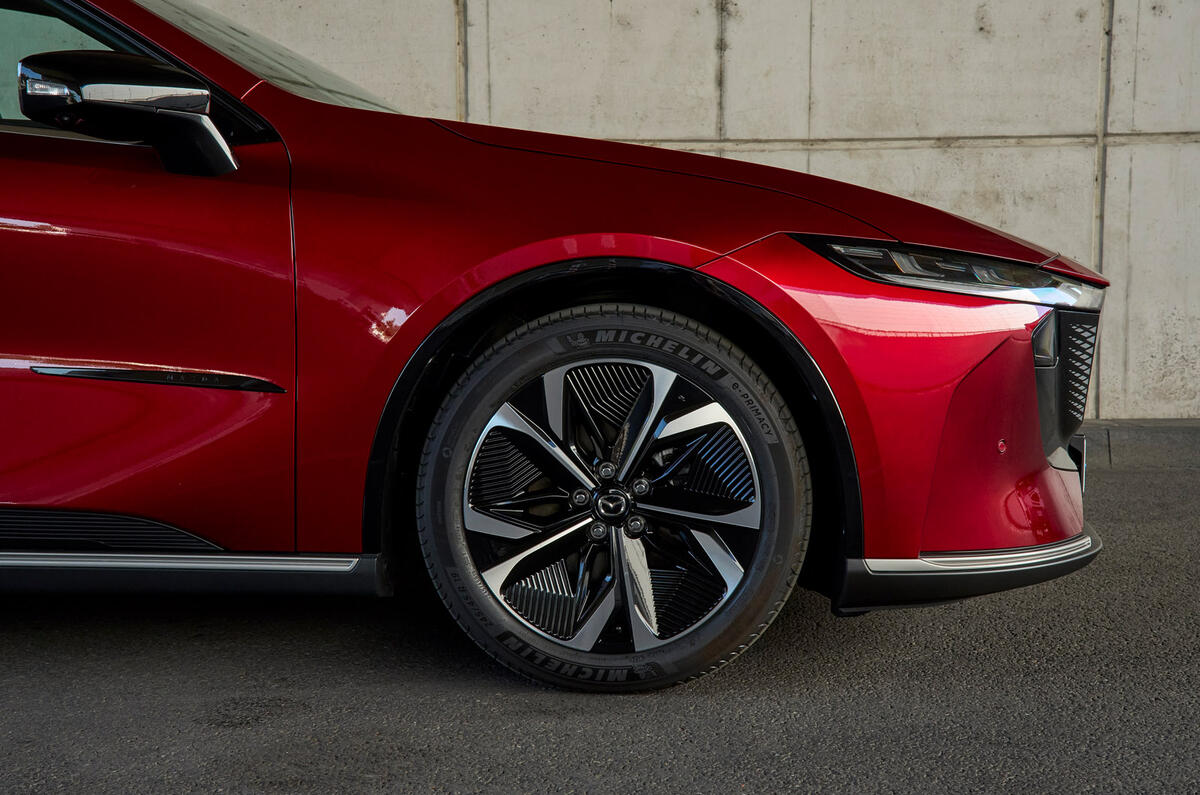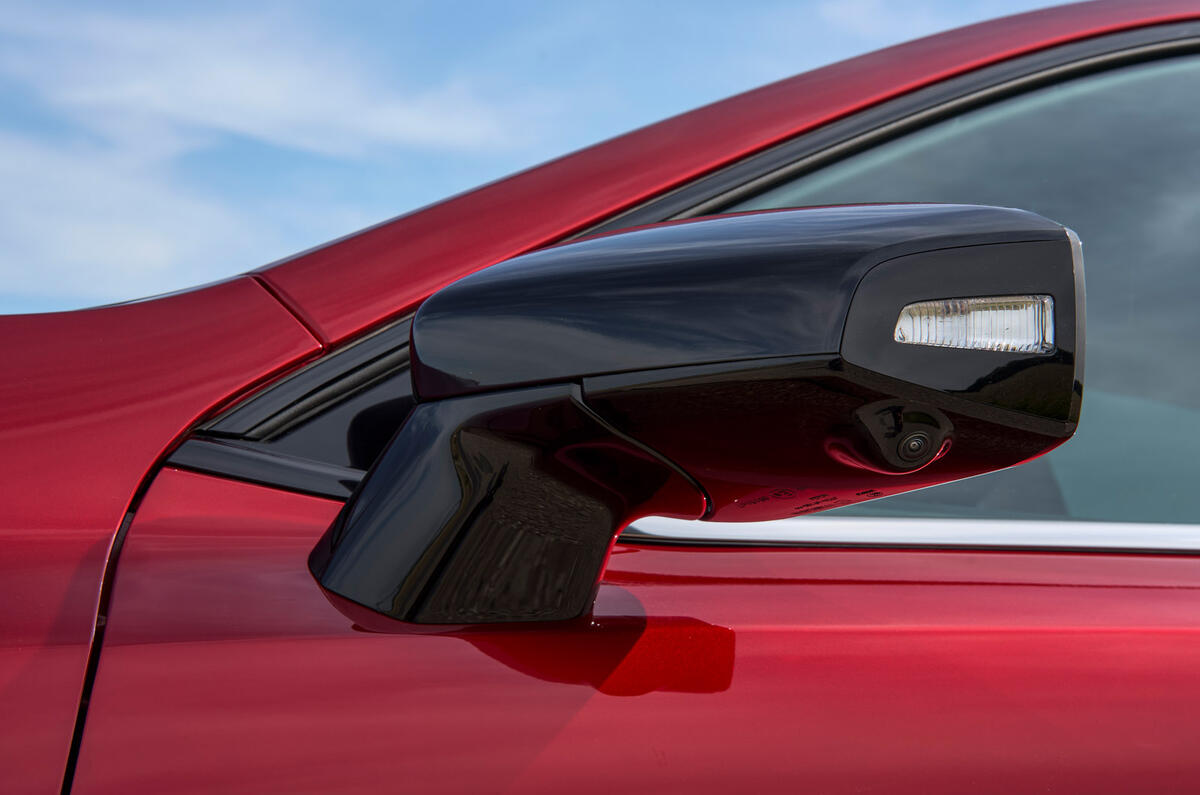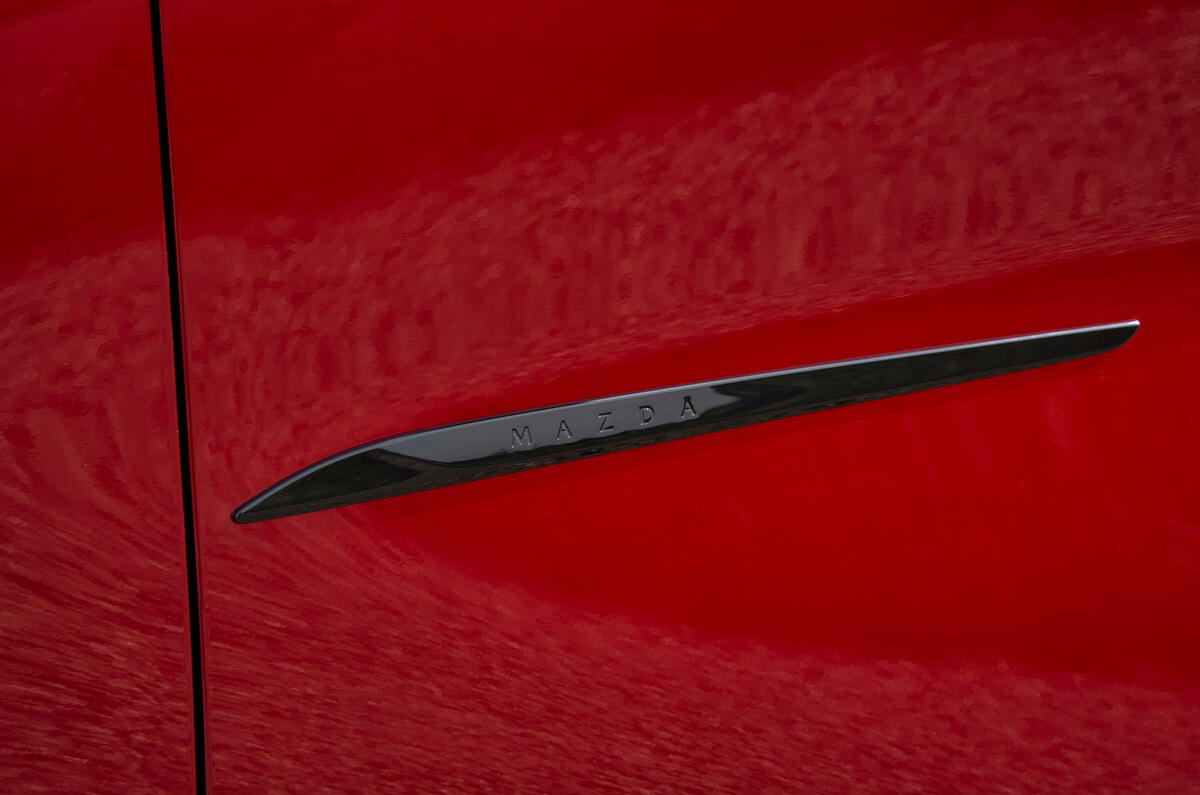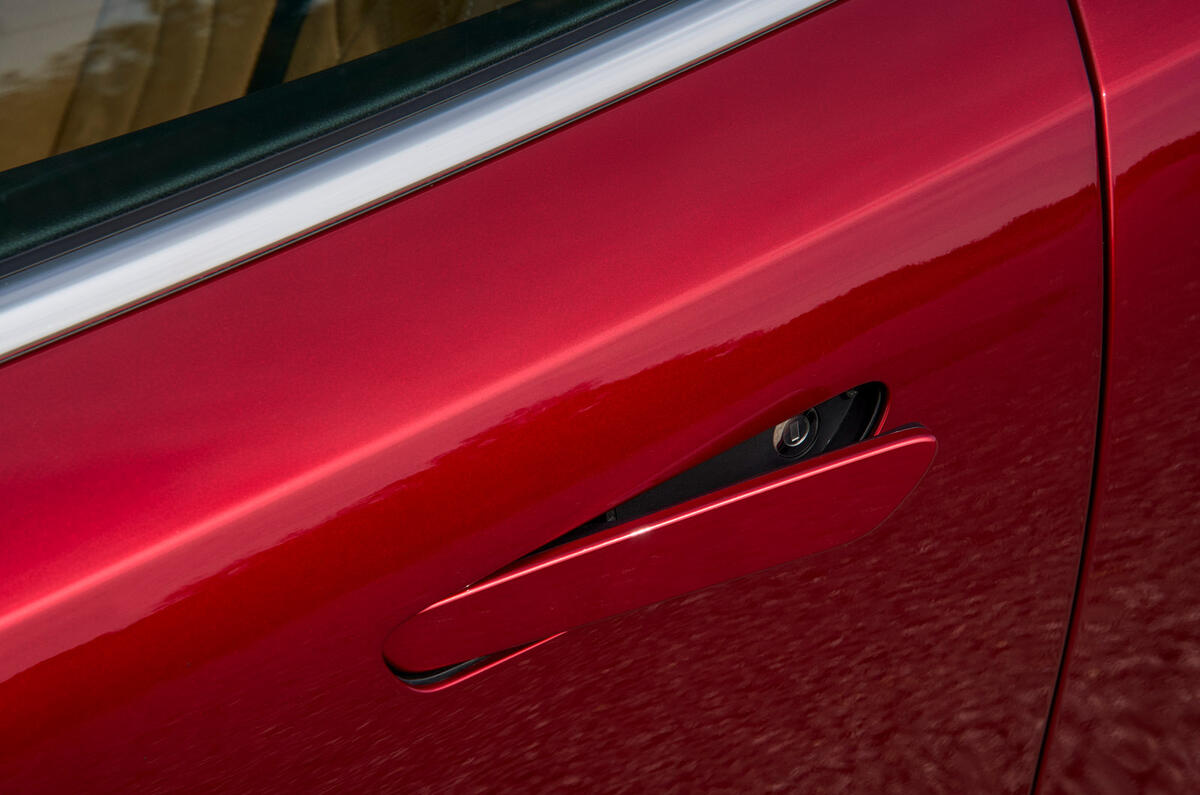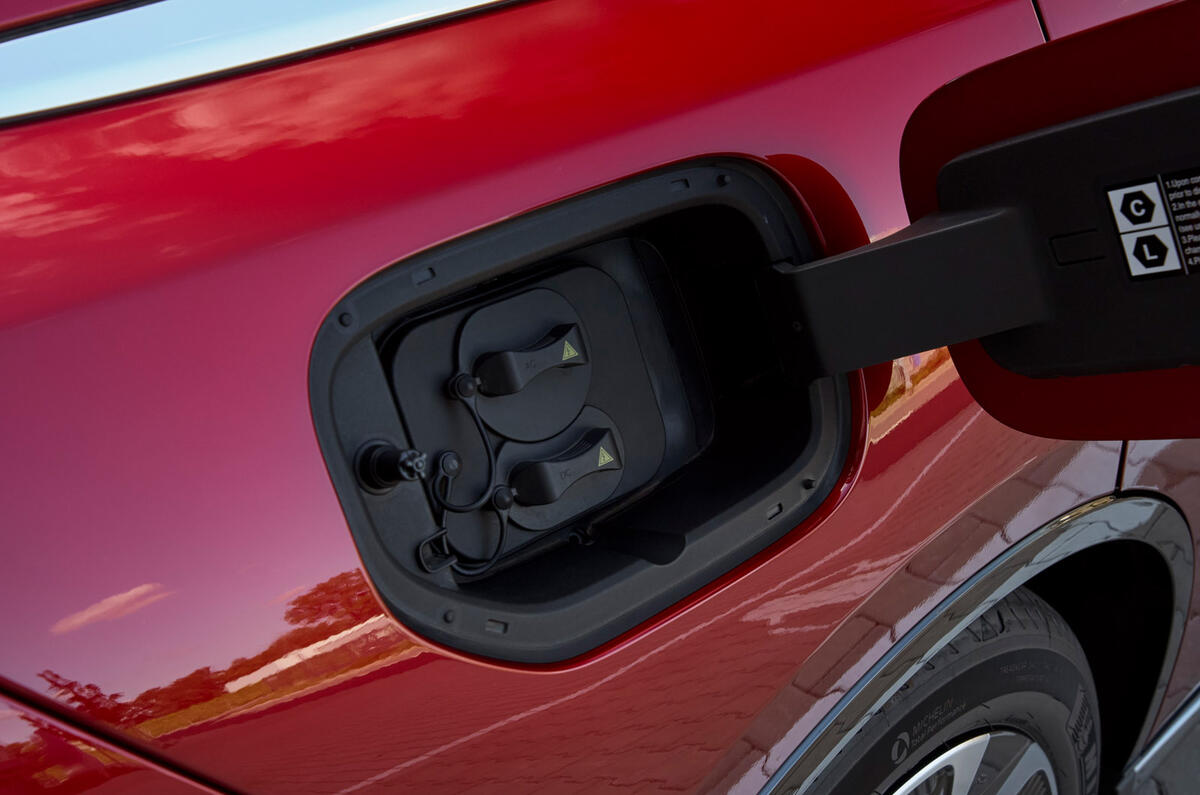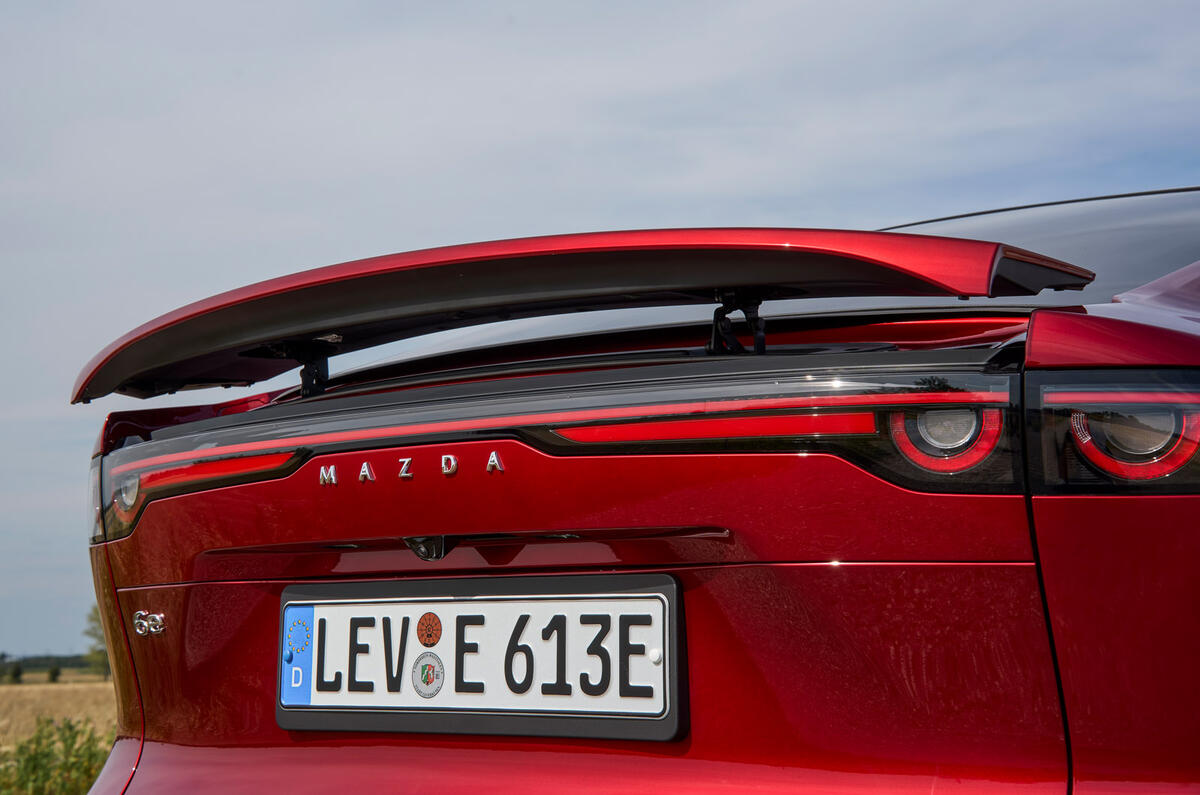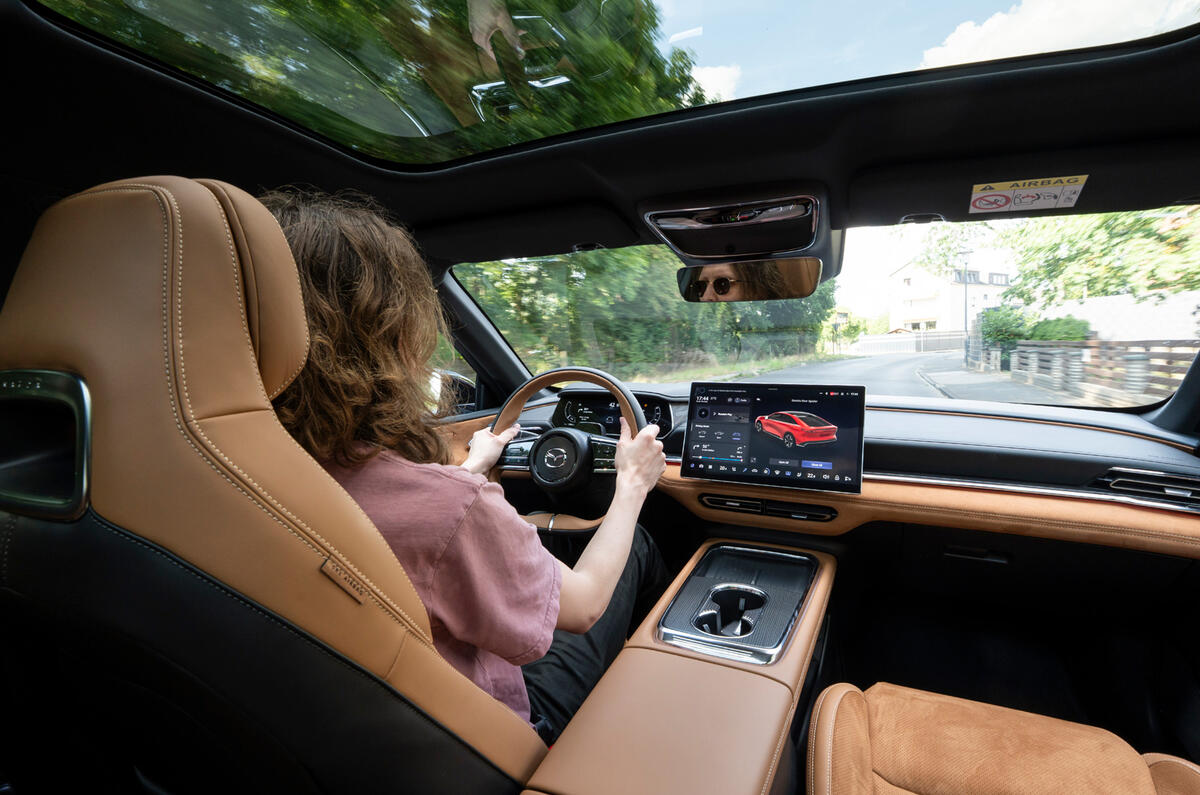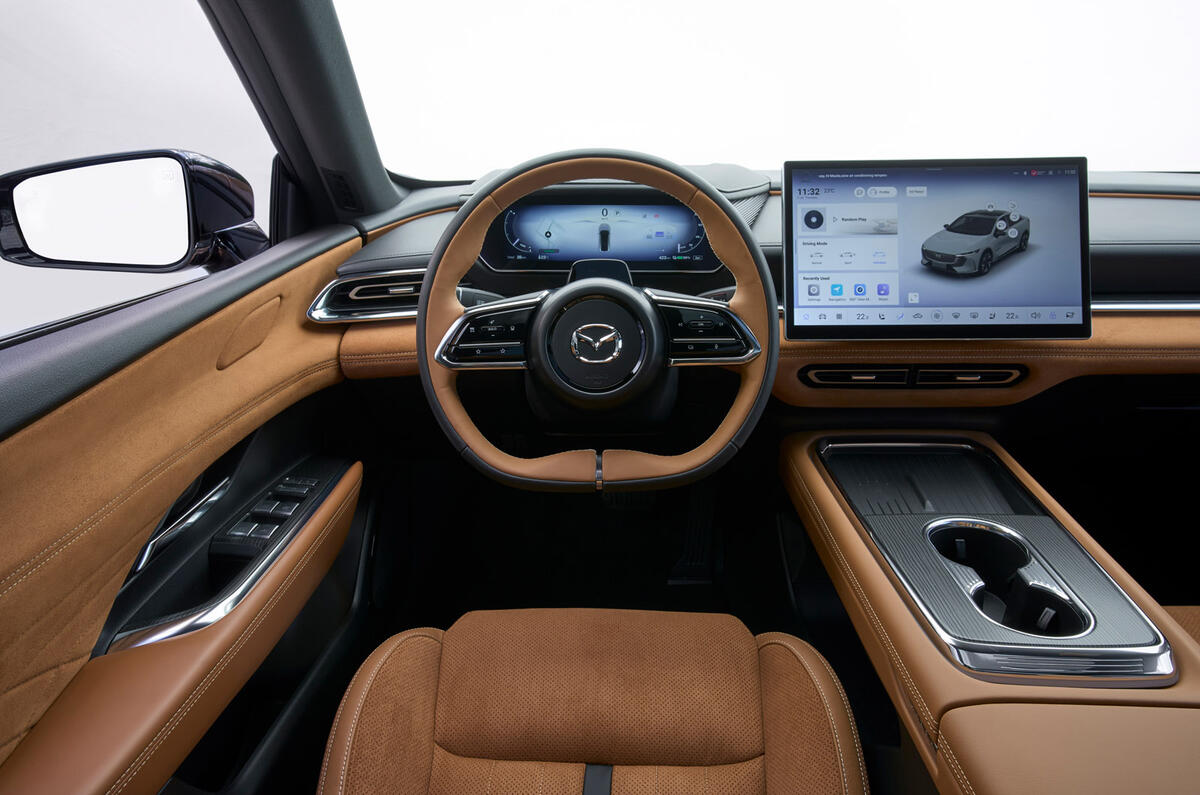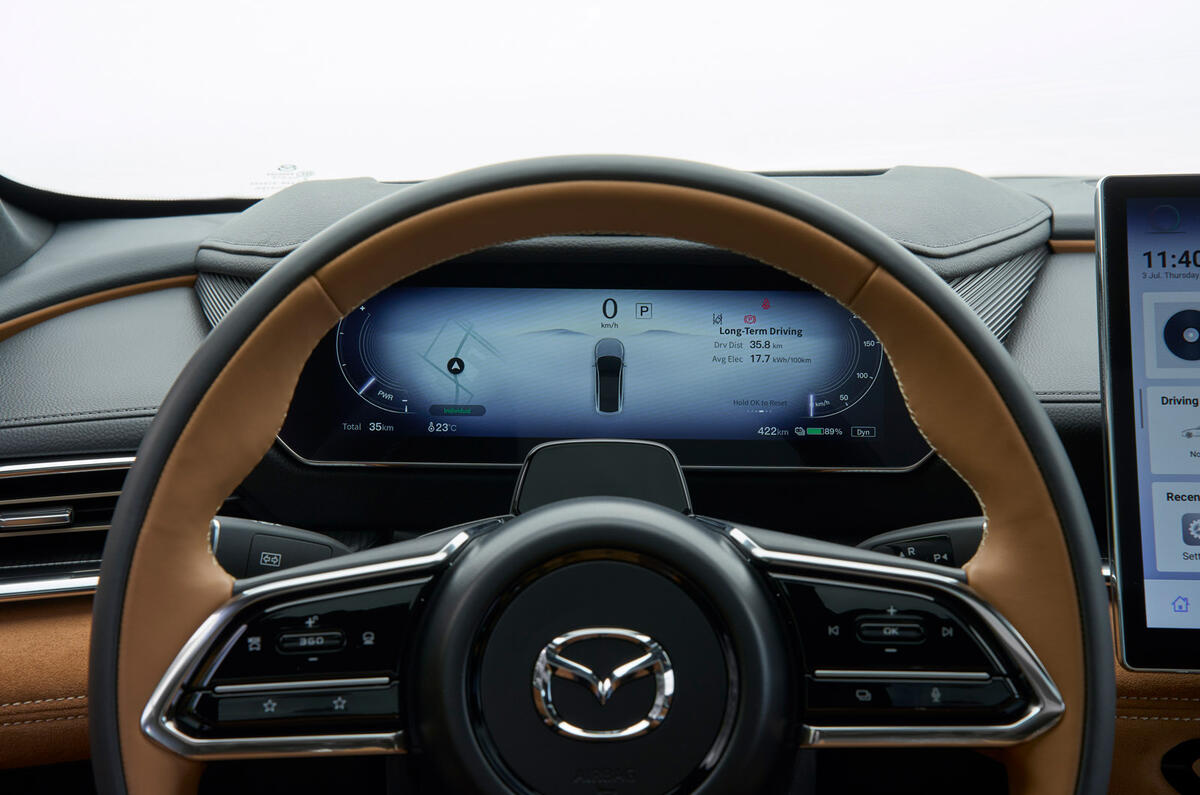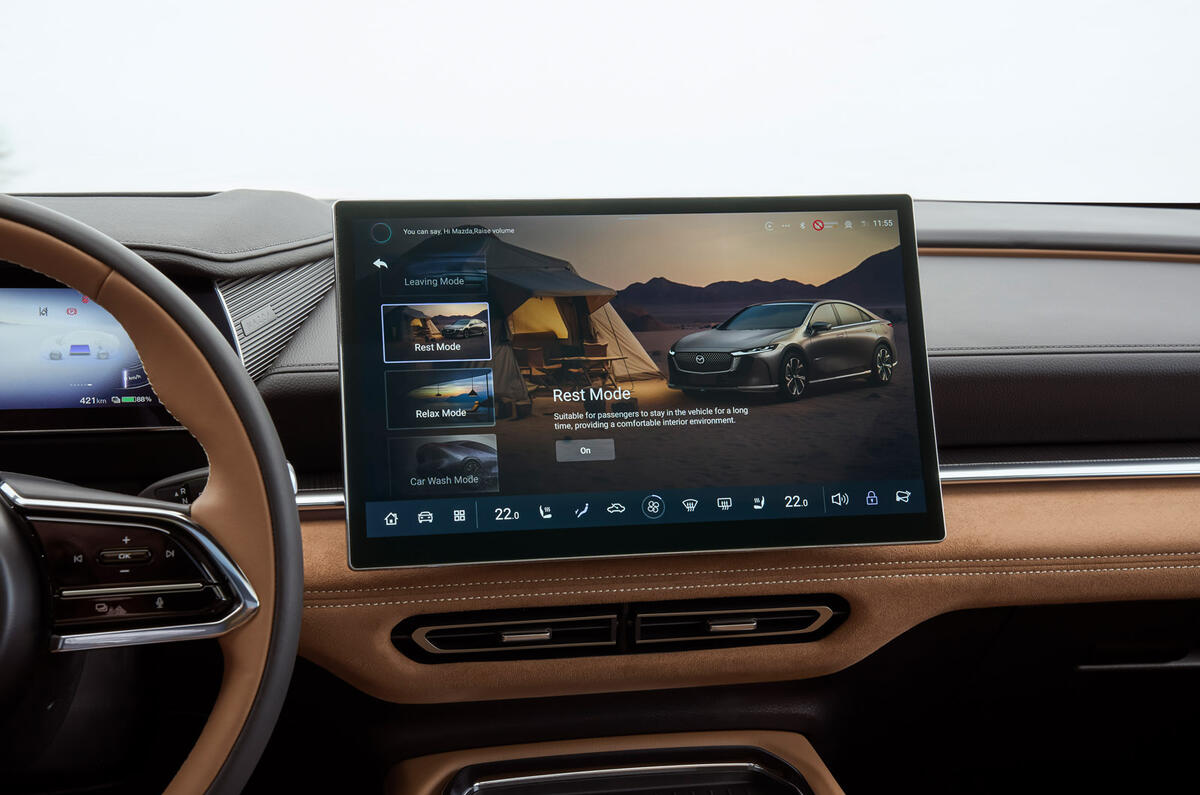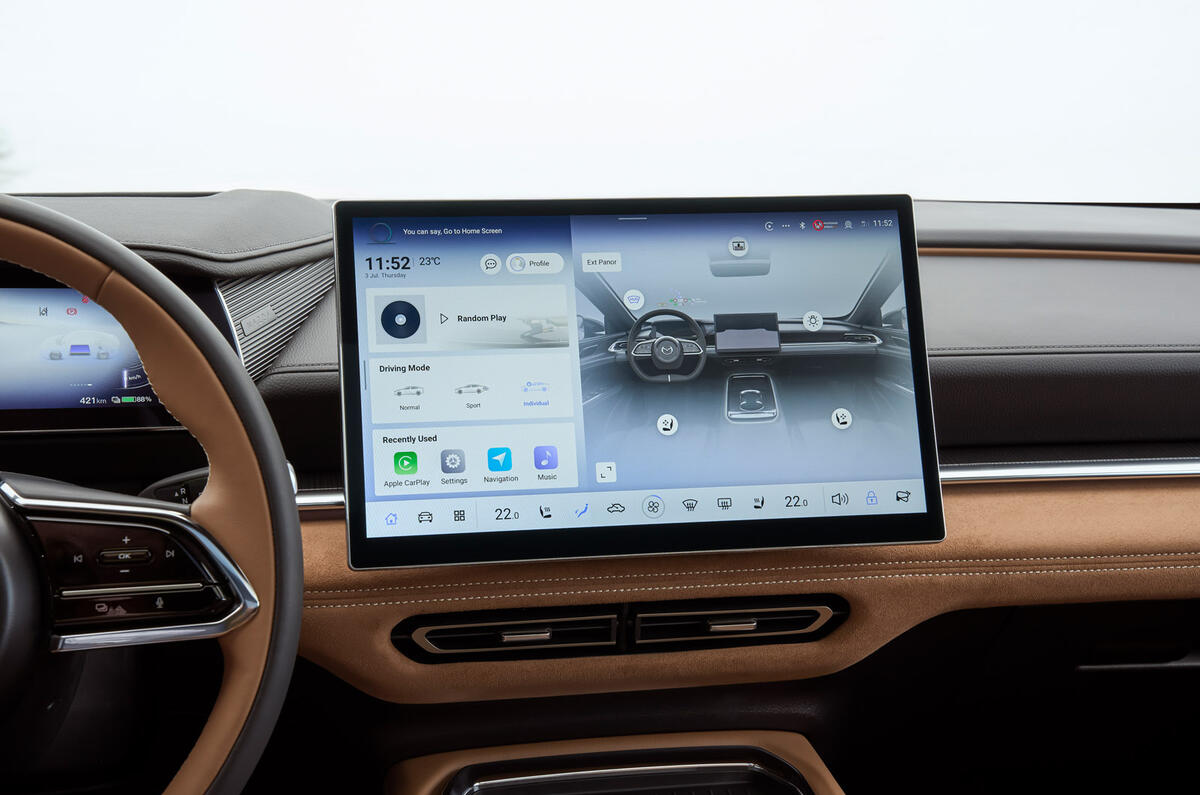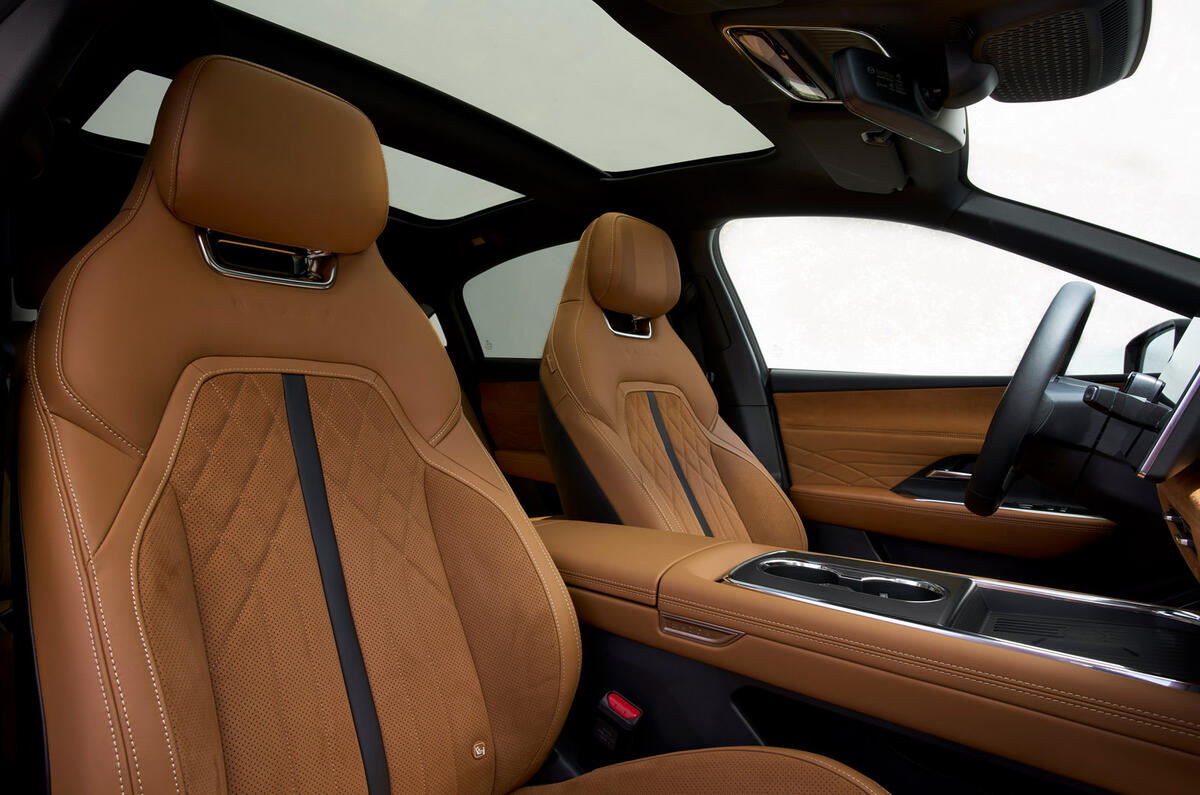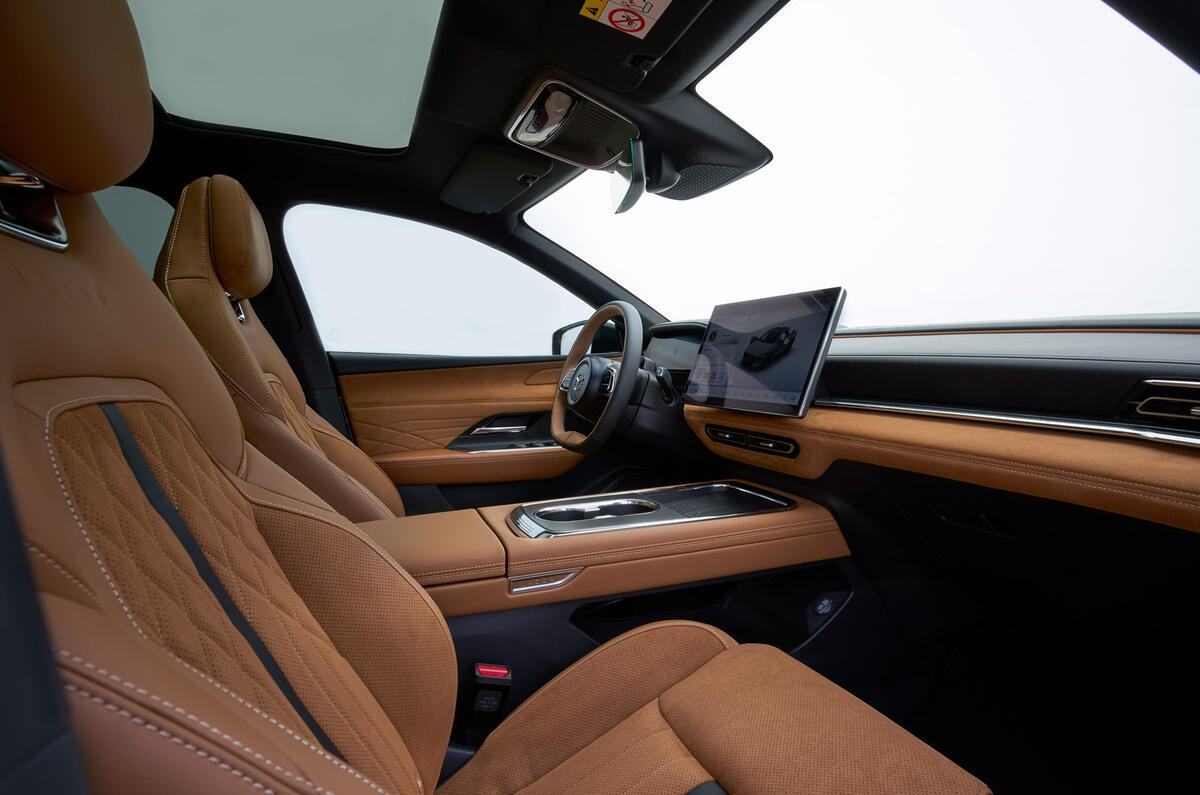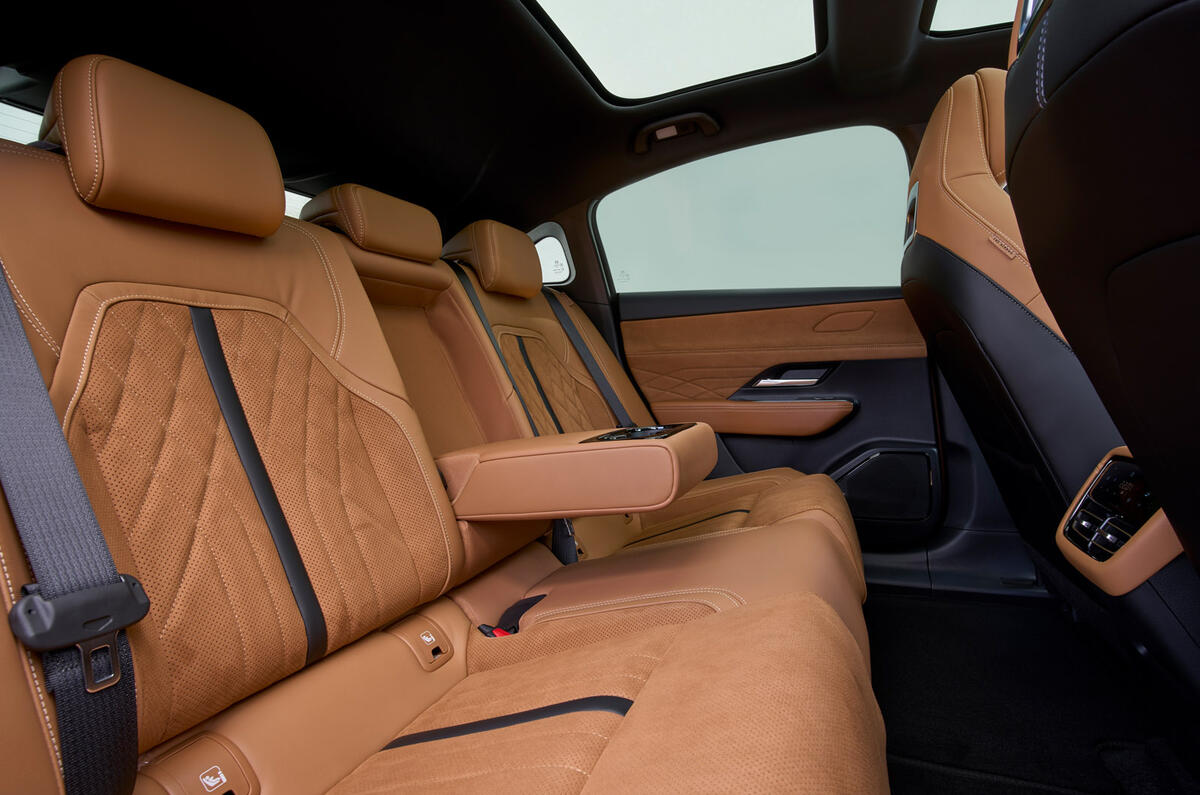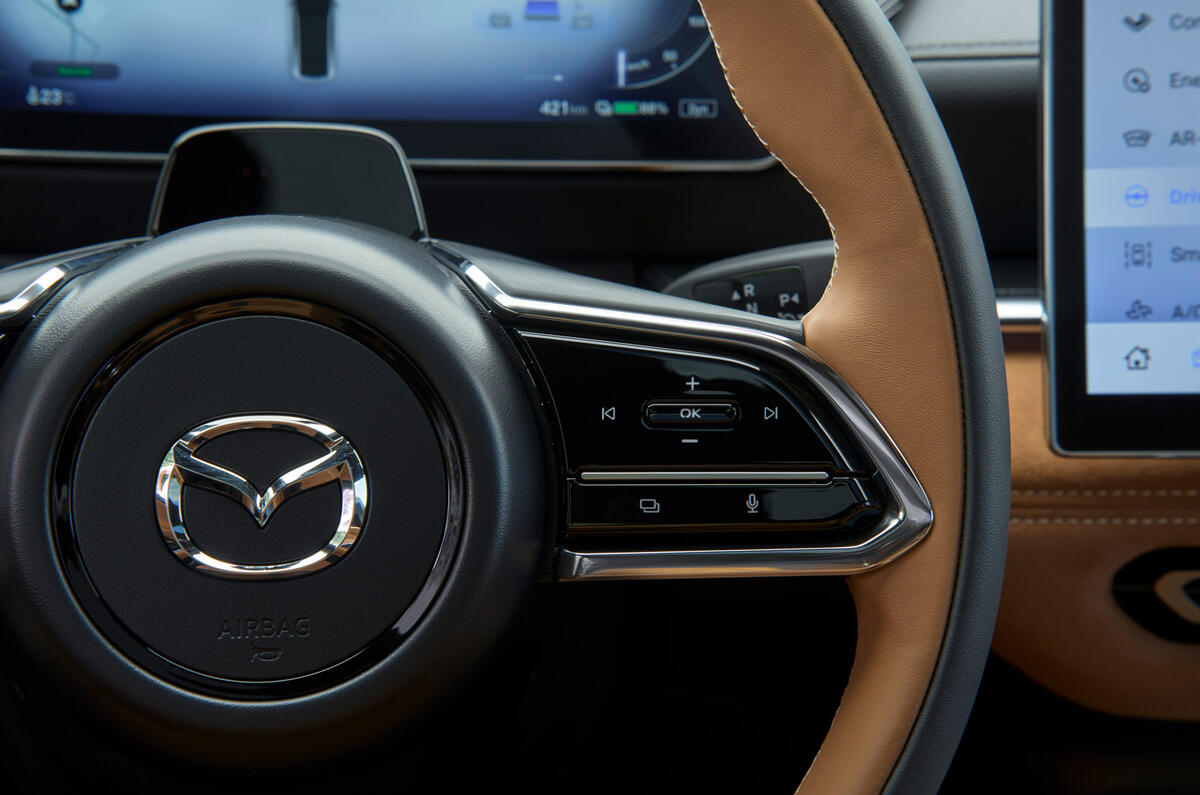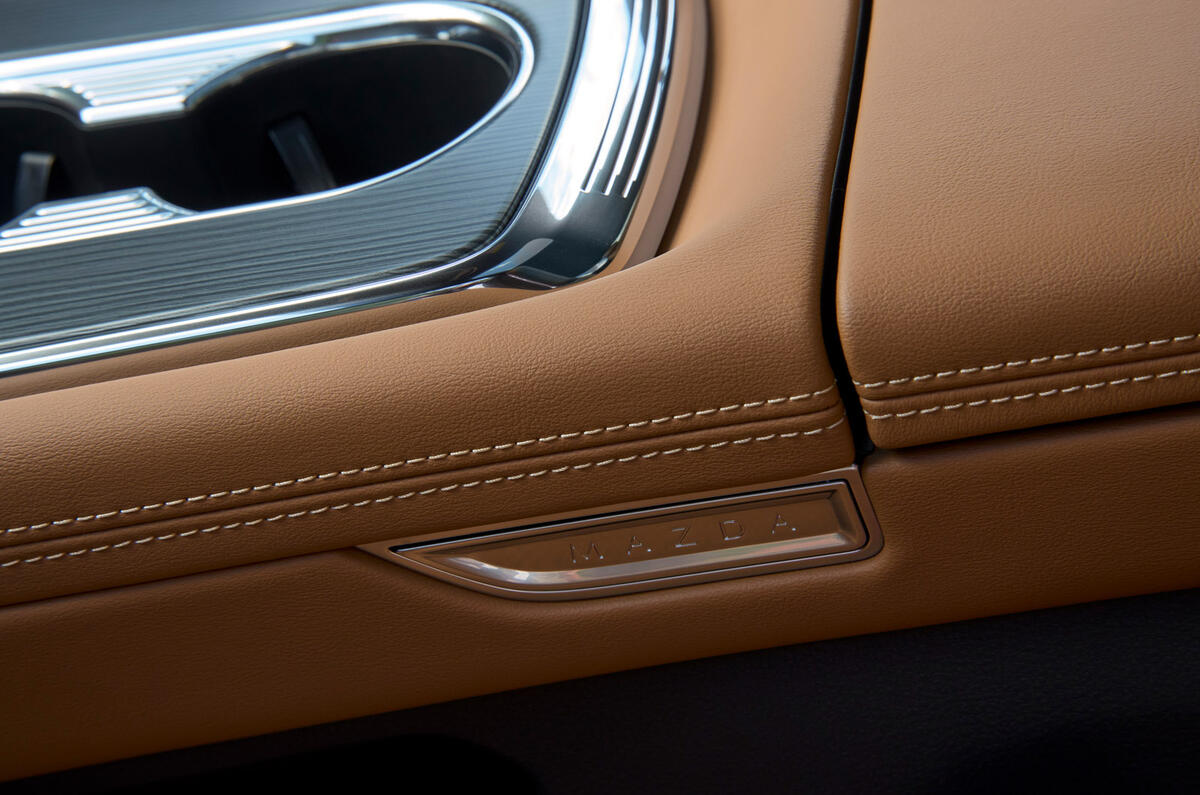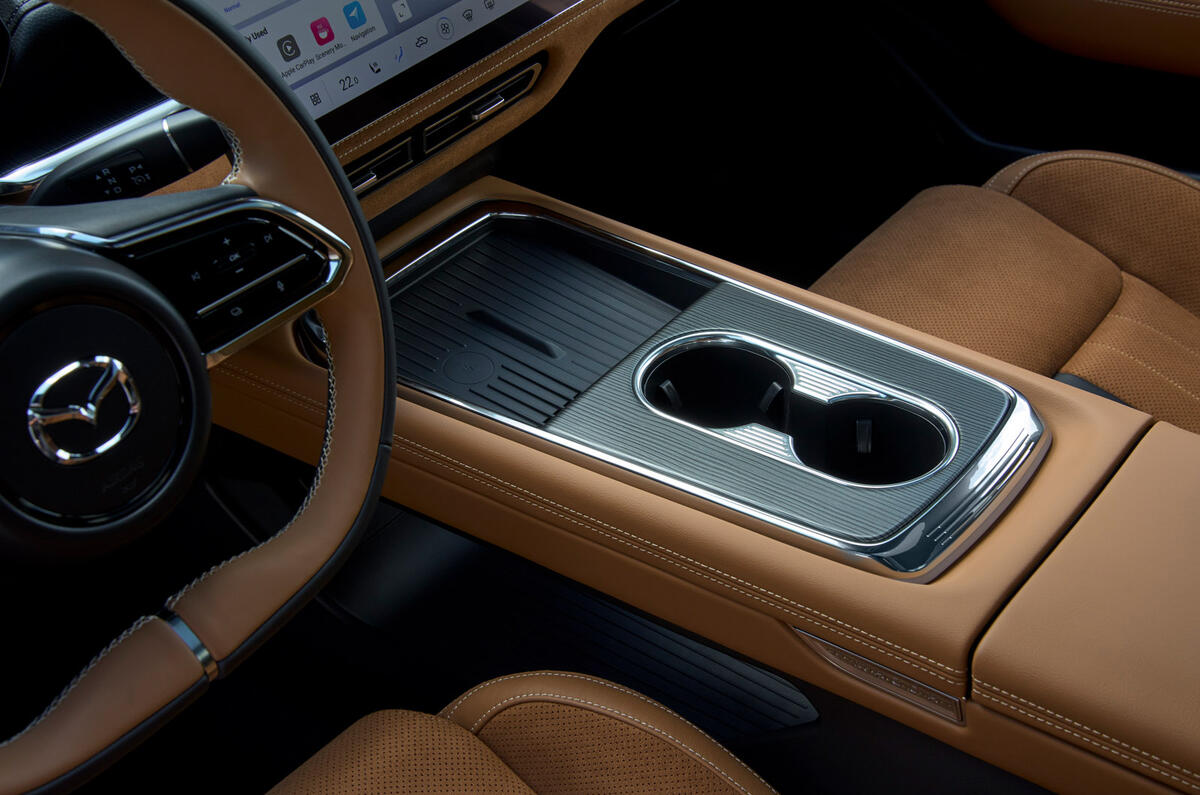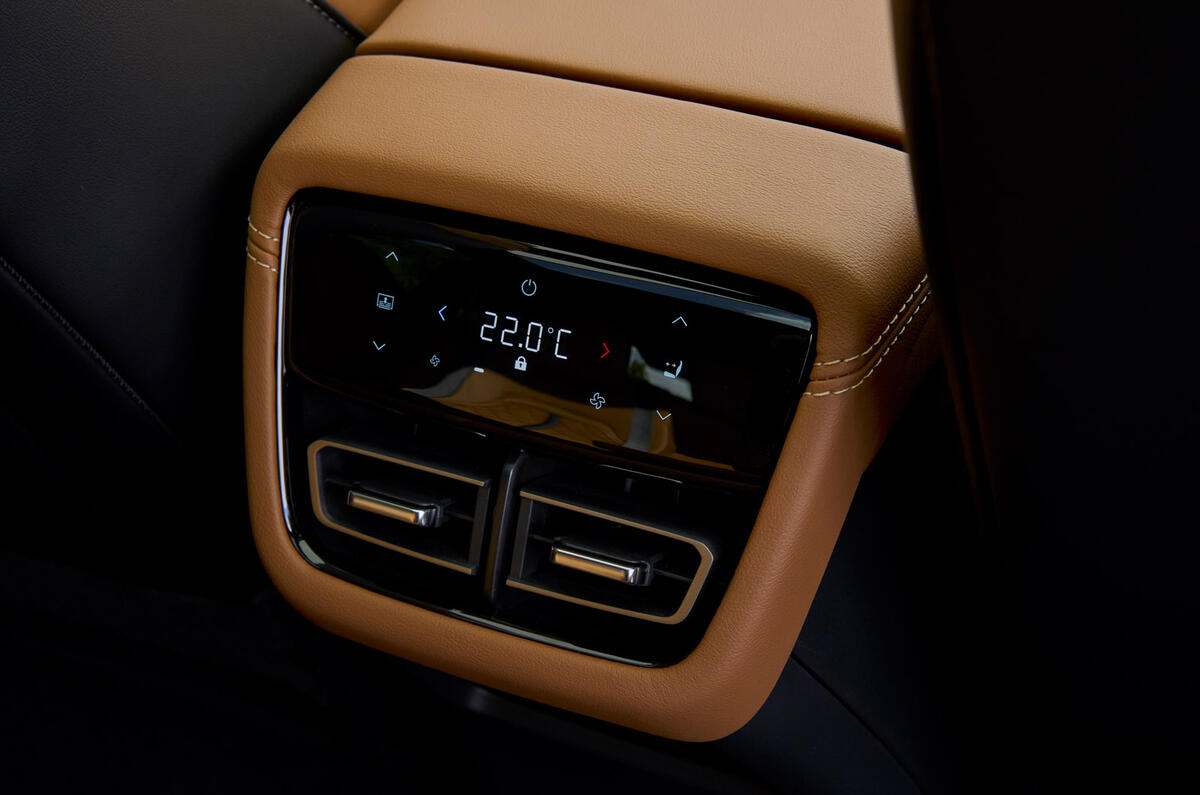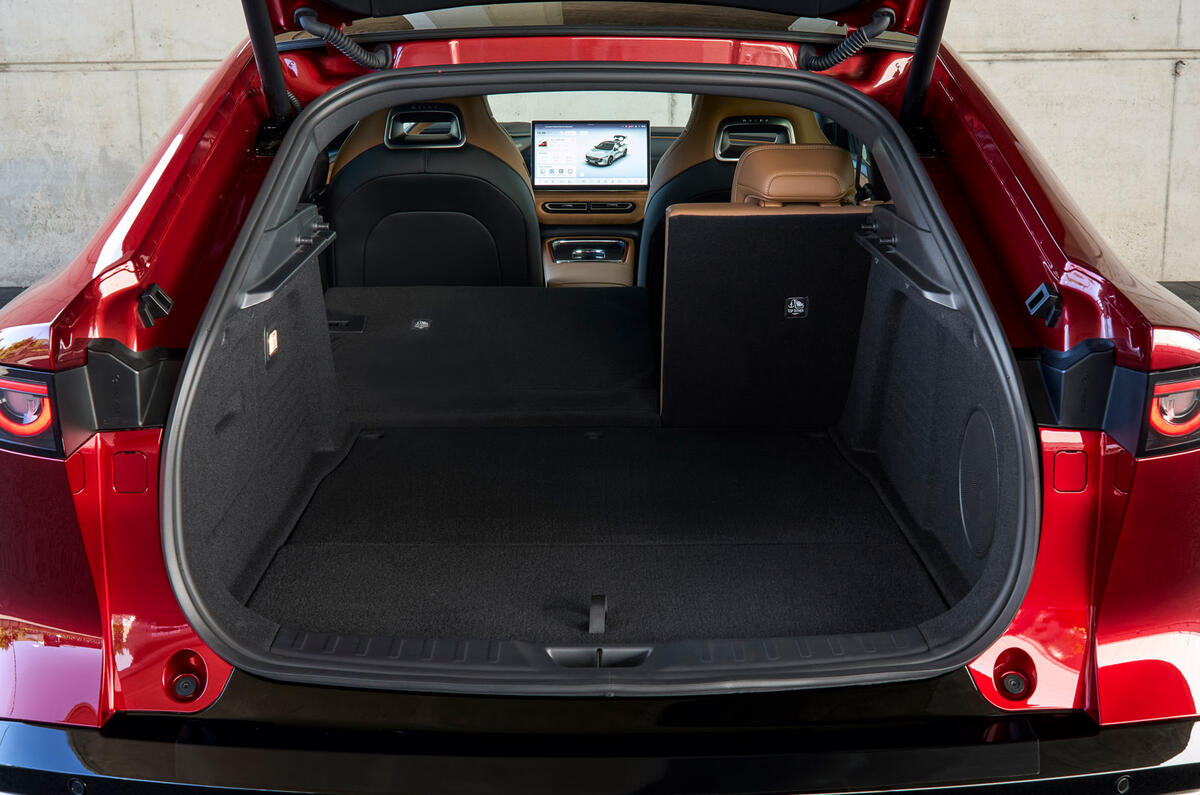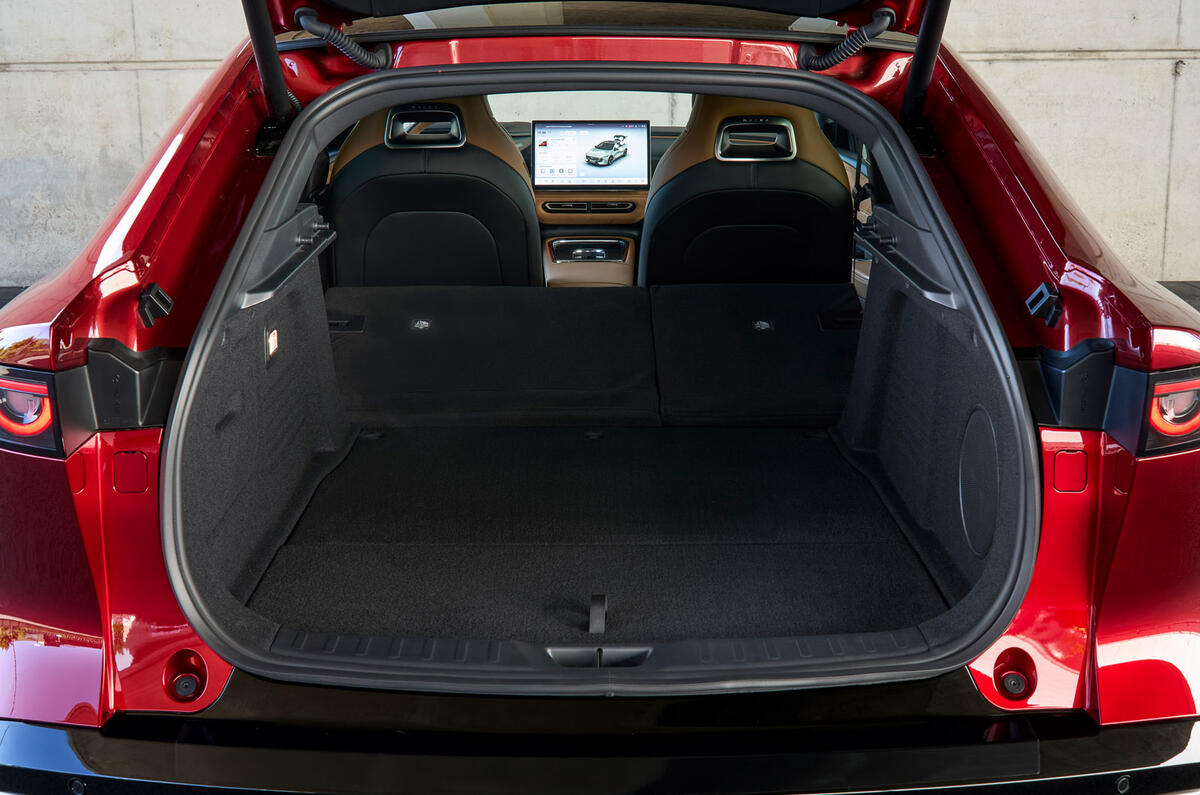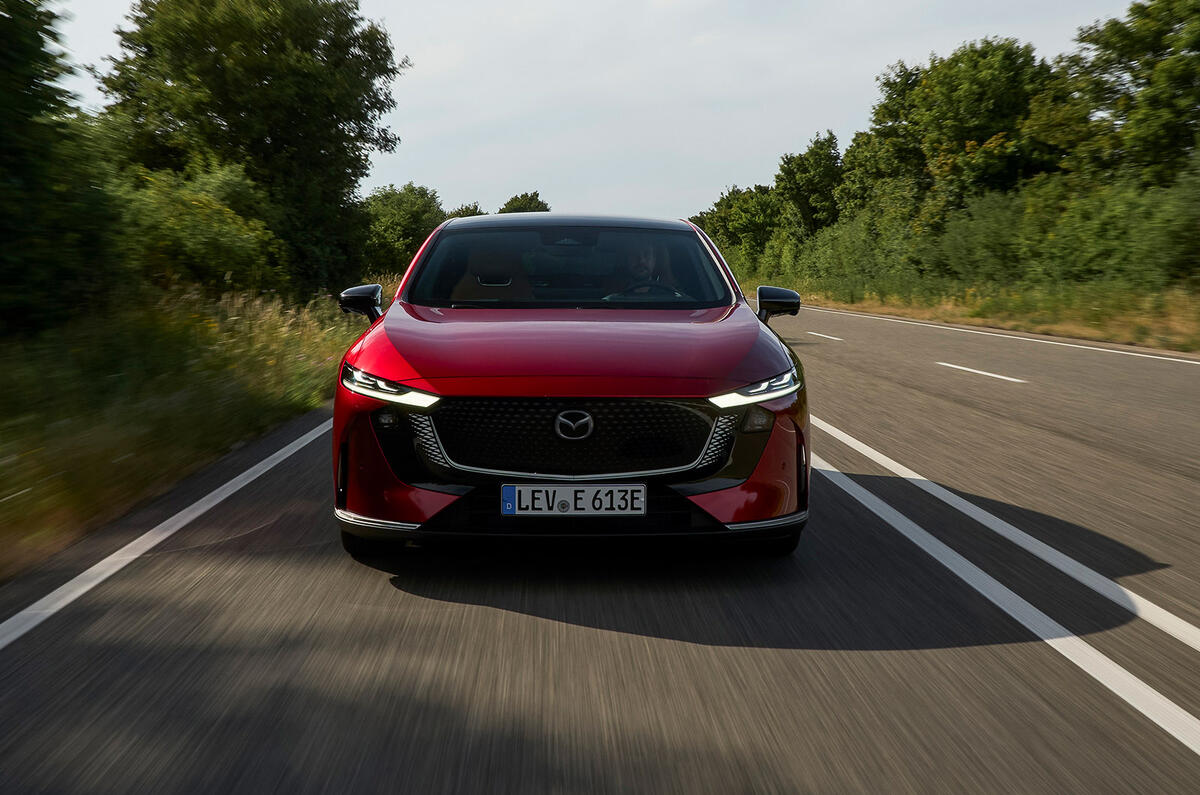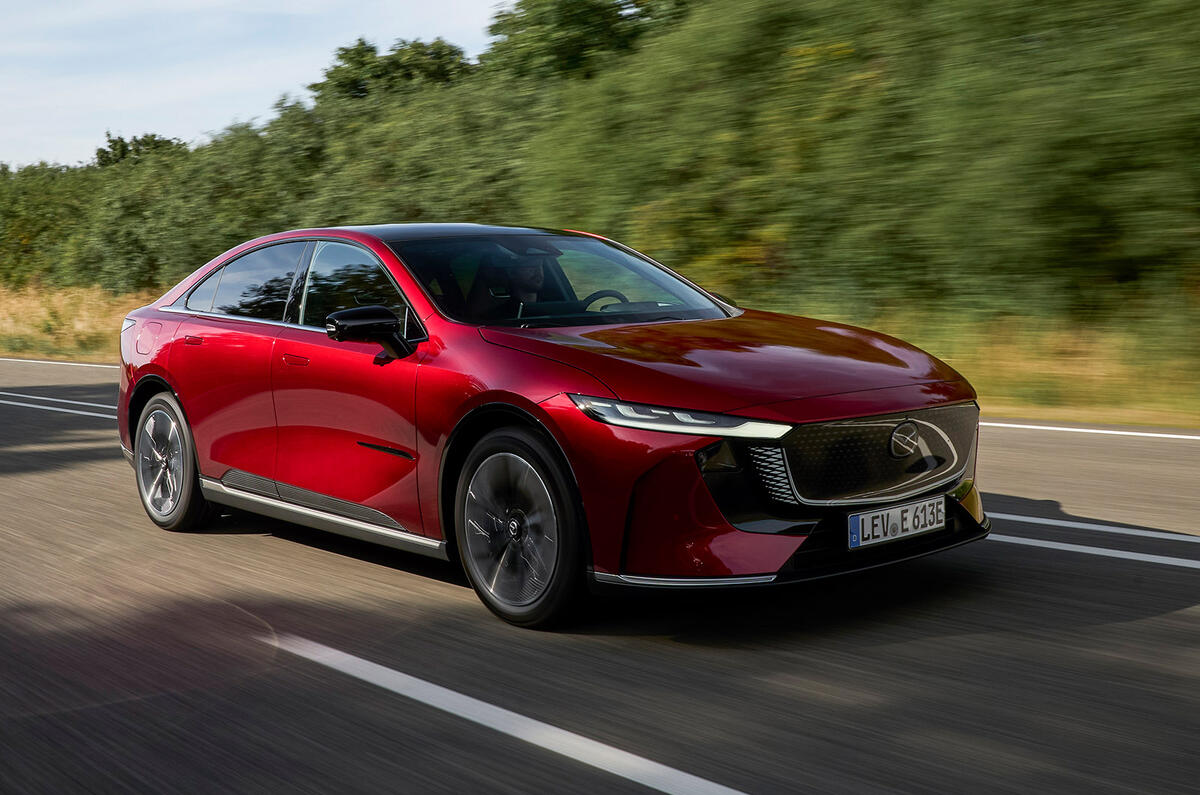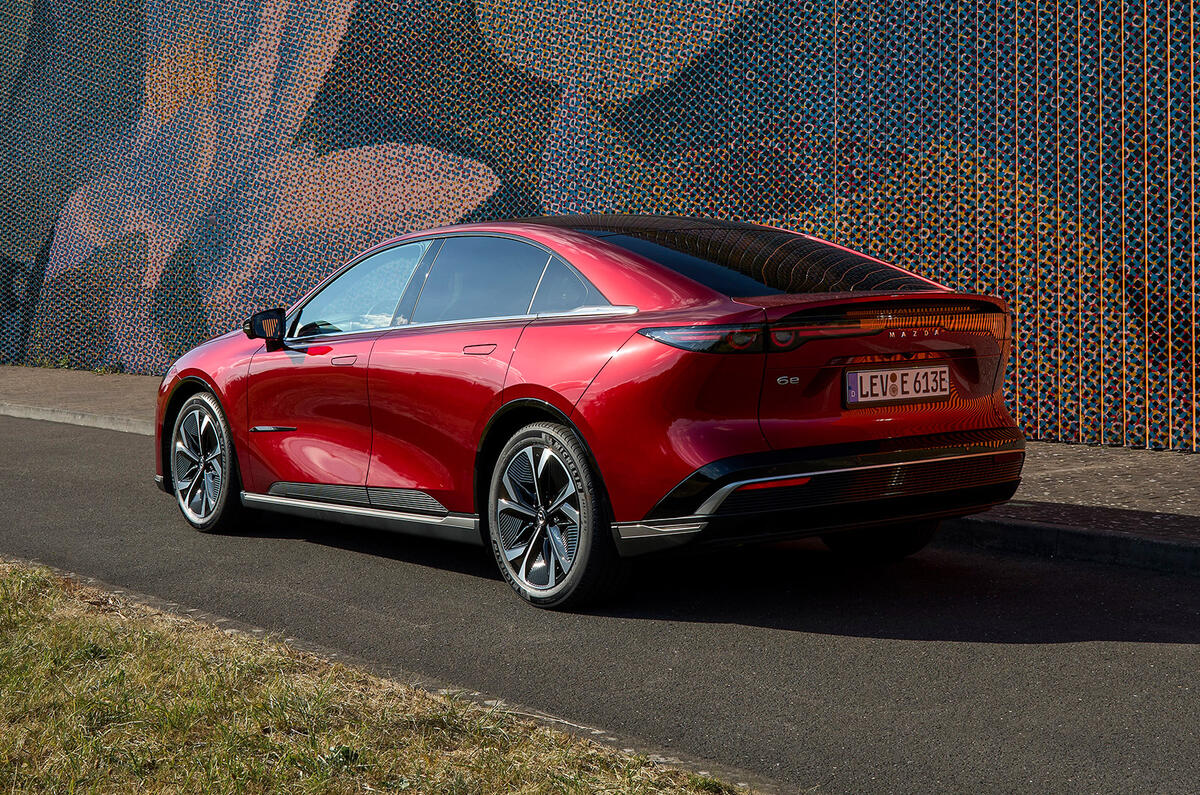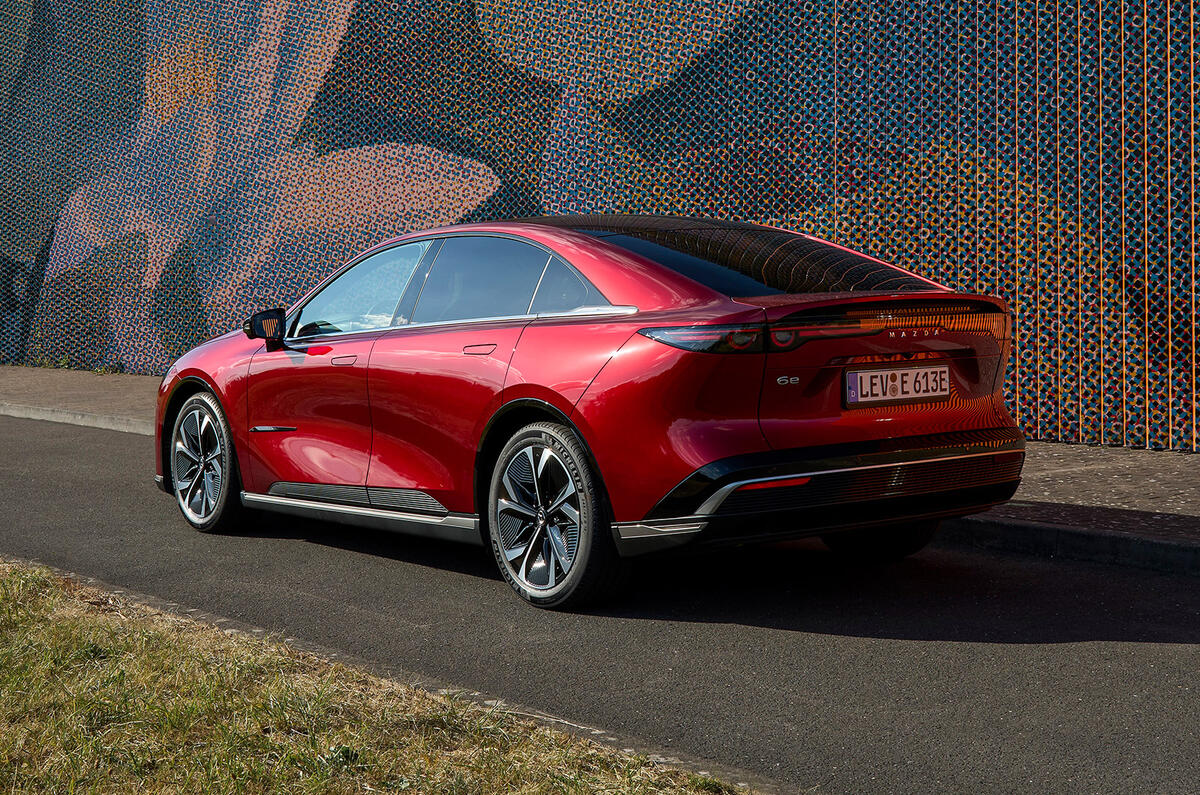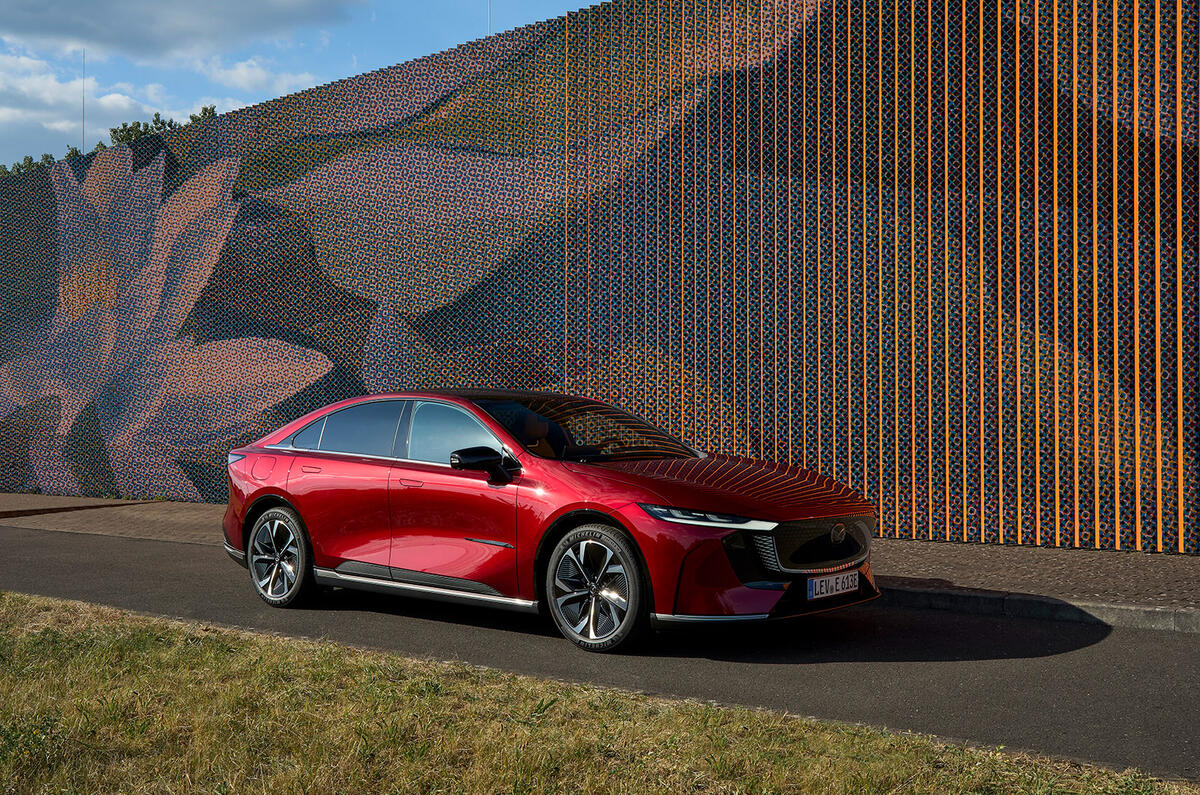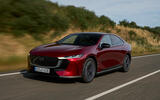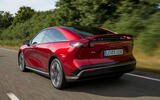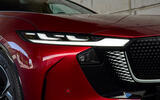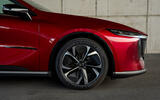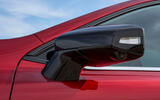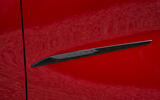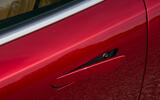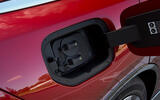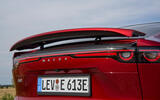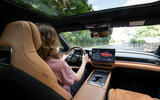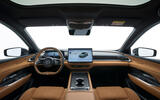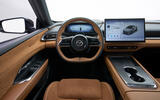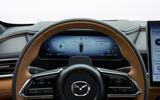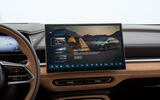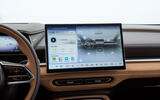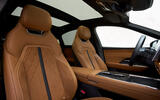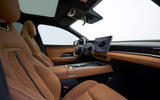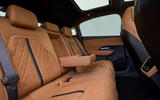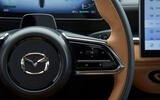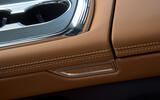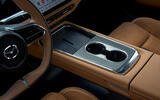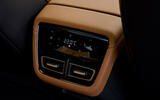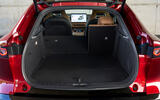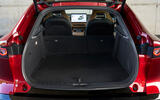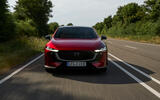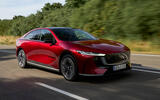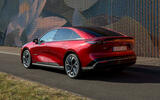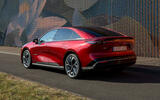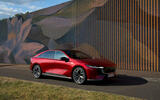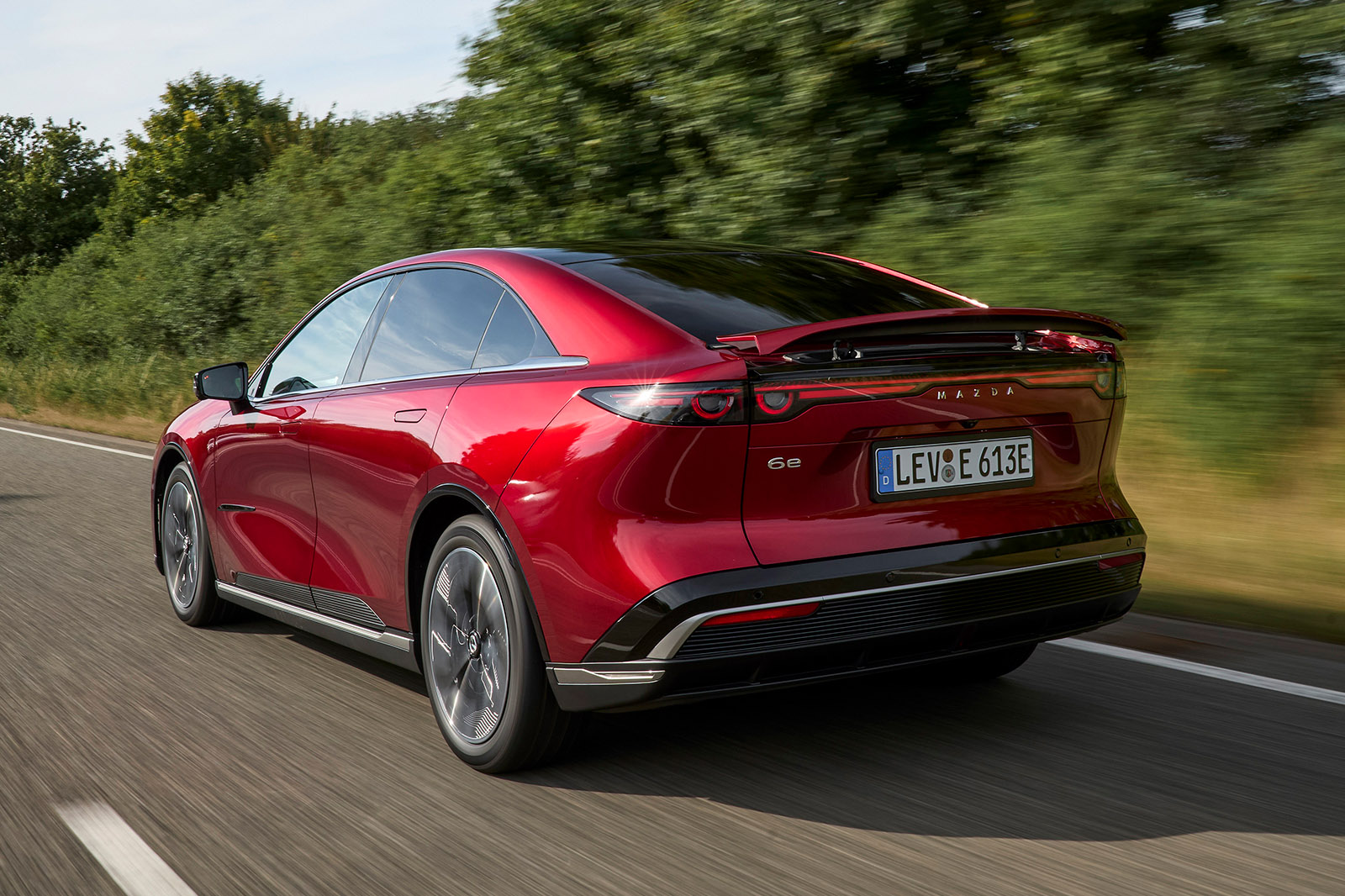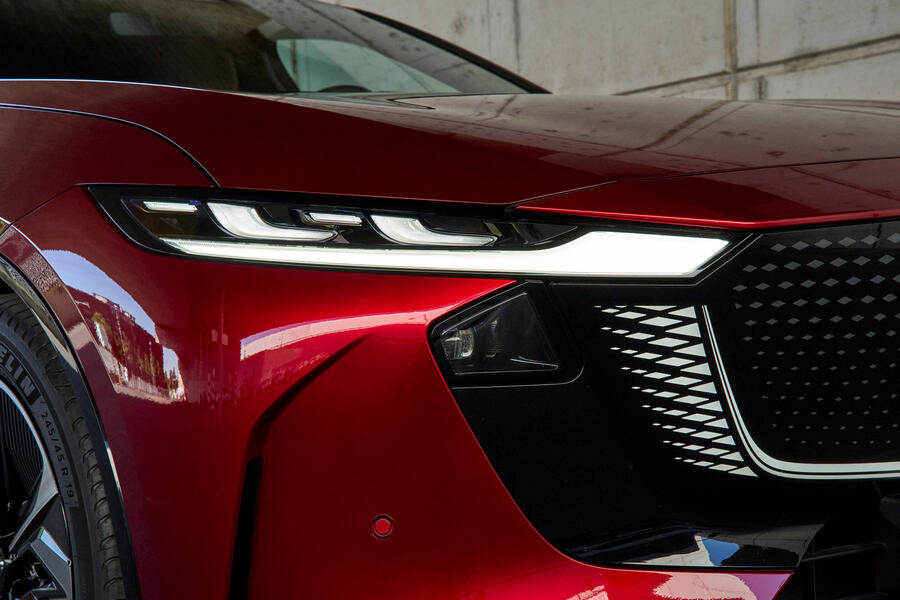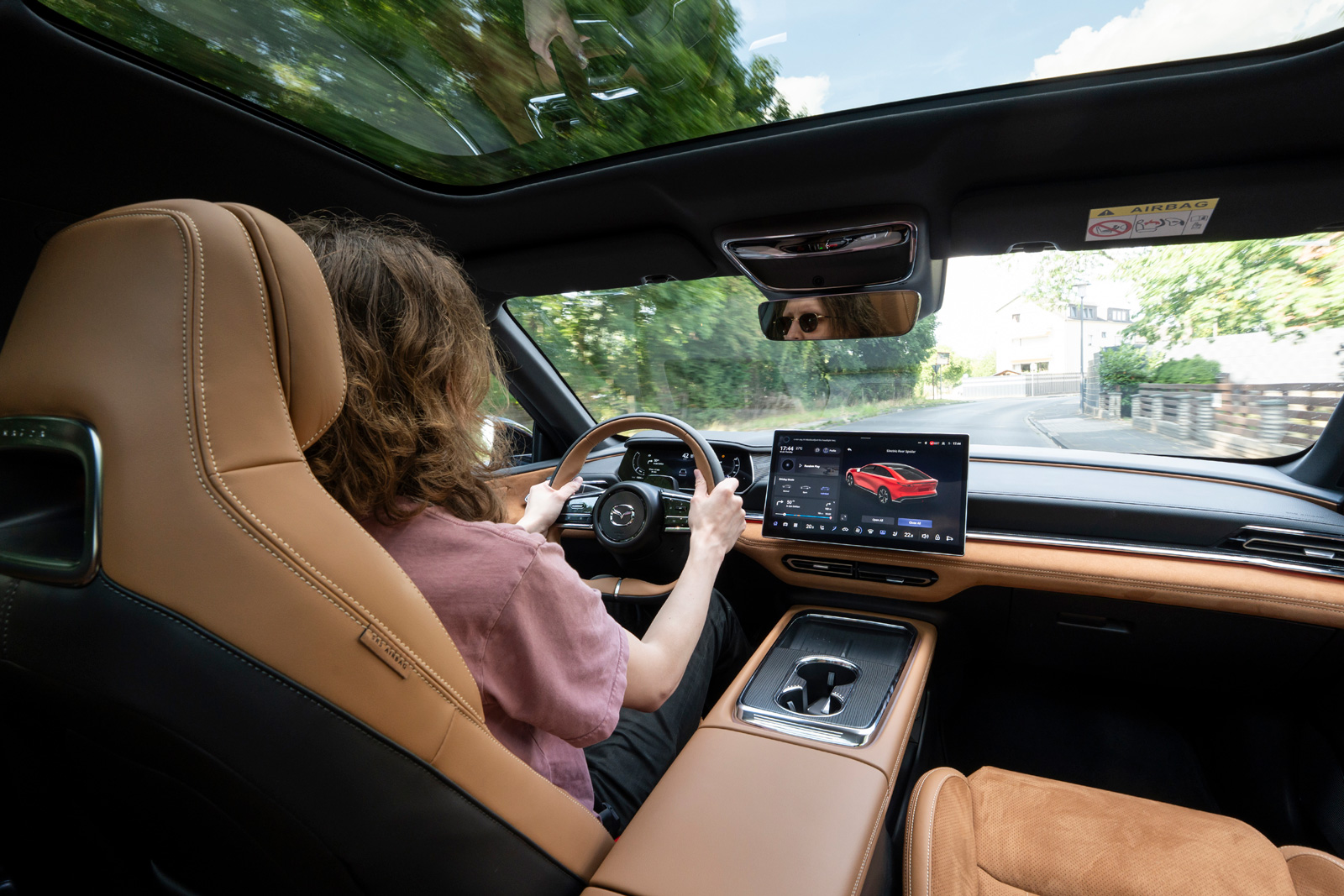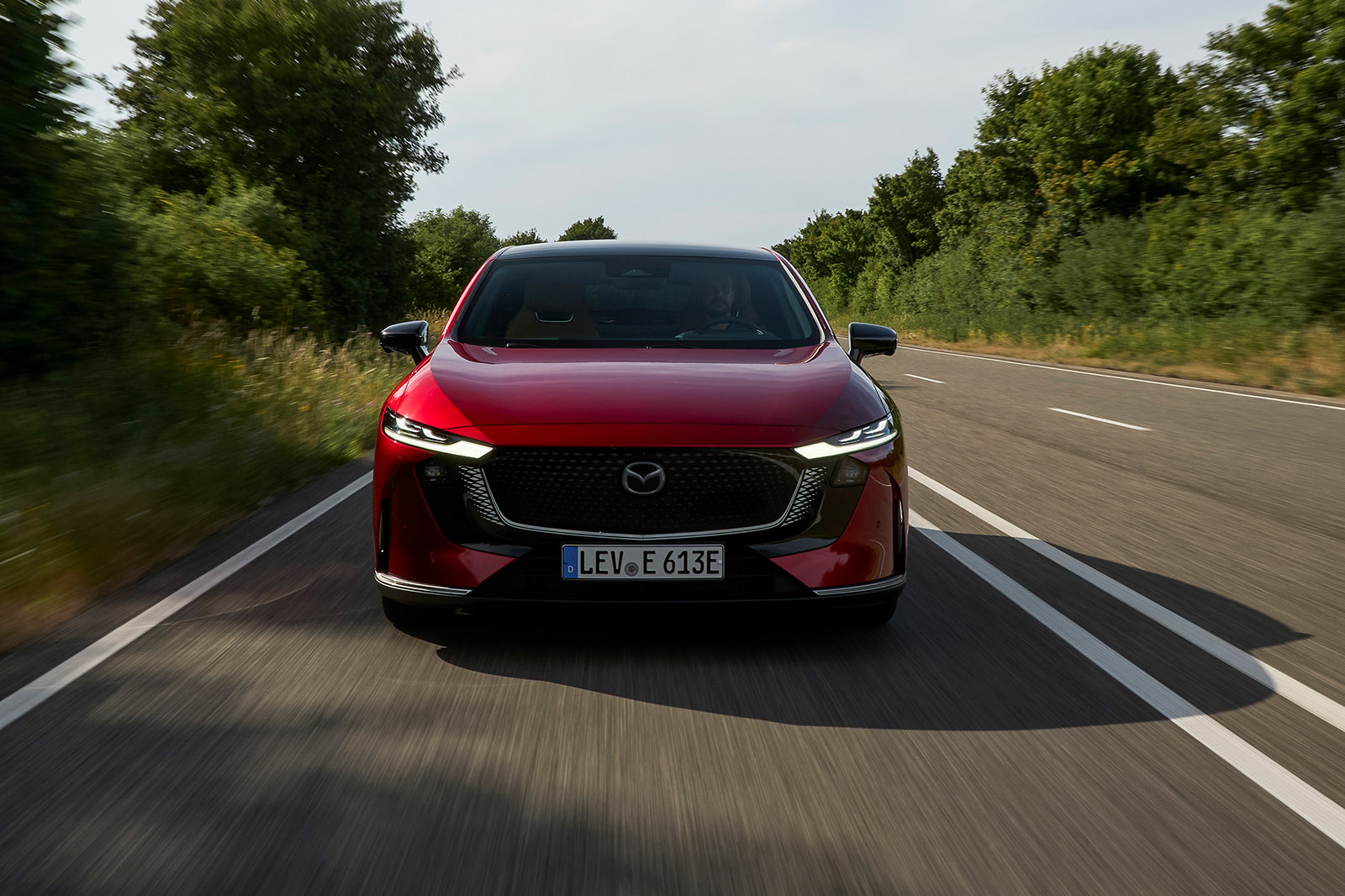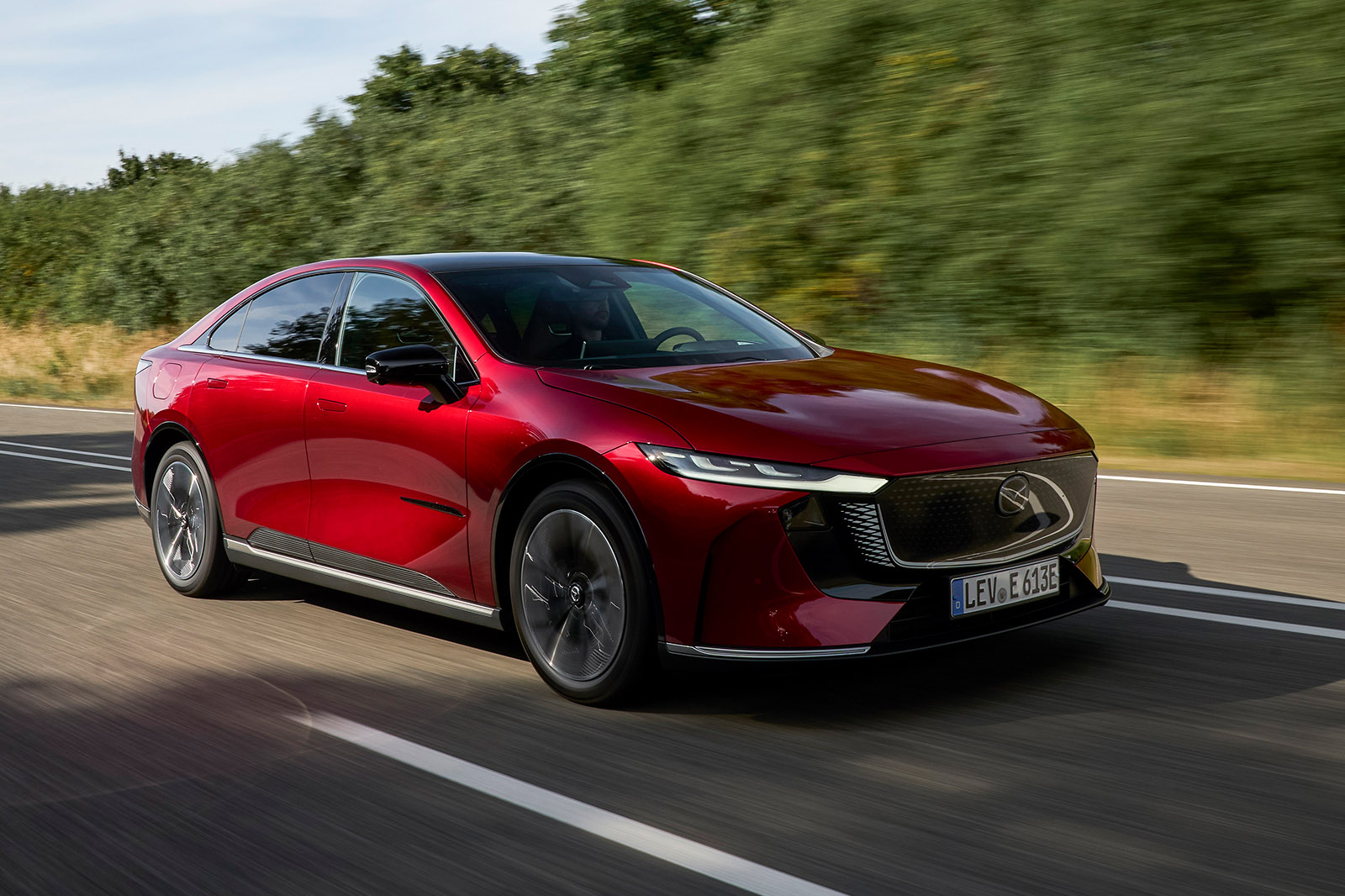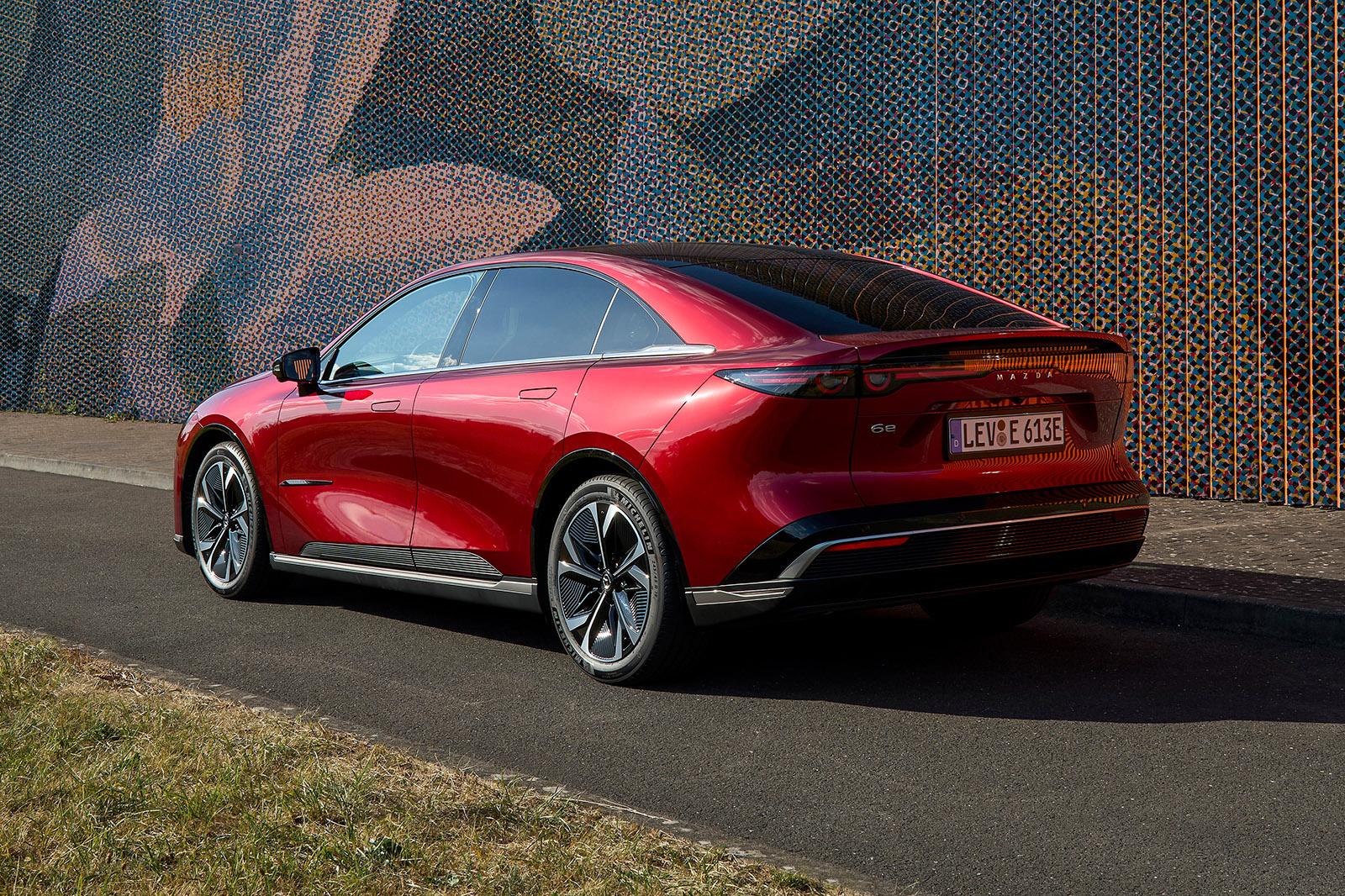Open the pleasingly weighty door with its frameless window and what faces you is clearly a big departure from existing Mazdas. Instead of an array of buttons, a small screen and lots of interesting shapes, you get a massive touchscreen on an otherwise fairly plain dashboard. Judging by the new CX-5 SUV, which is a complete Mazda original, the brand is clearly happy to go down this route, but whichever your preference, it must be said that something of what normally sets Mazda apart is being lost.
To its credit, you can see where it’s put the effort in to differentiate the 6e from the source material. In the Takumi Plus trim of my test car, there's lots of nice caramel-coloured leather and suede, which gives a classy feel. Standard Takumi trim gets synthetic leather in either beige or black.
Conversely, being able to see what Mazda has managed to change means you can also clearly spot what couldn’t be altered. This is exemplified – stick with me here – by typography. Mazda has quite a distinctive, classical font that it uses across its website, literature and the infotainment of its ‘own’ cars. In the 6e, it pops up here and there but not consistently. Instead, it’s mixed with more generic letters and numbers.
All the screens feel very Chinese. Like in many BYDs, Jaecoos, GWMs and the like, a lot of information, widgets, icons and graphics are thrown at you with little sense of hierarchy, which makes it all harder to use on the move than it should be. I’ve tried much worse; there’s Apple CarPlay, the climate controls are in a permanent toolbar at the bottom of the screen and it’s pretty responsive, but none of it is particularly pleasing. Mazda likes to talk about craftsmanship, but this gives off cheap Android phone vibes.
The driving position reminds me of the Genesis Electrified G80 in that you’re slightly too high in relation to the controls, with your head in the rafters. But because there’s enough adjustability and a comfortable seat, you get used to it.
Rear seat passengers have ample knee room, but a high floor and a low roof mean it’s not as accommodating as it seems at first.
The boot is quoted at just 336 litres, although it seems like more, and there’s a 72-litre frunk with a handy fitted removable basket.



